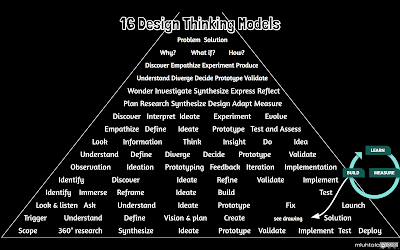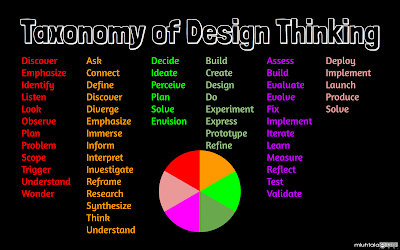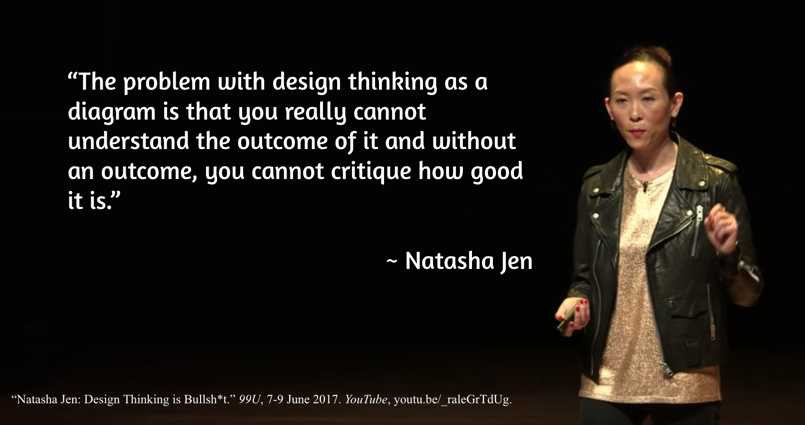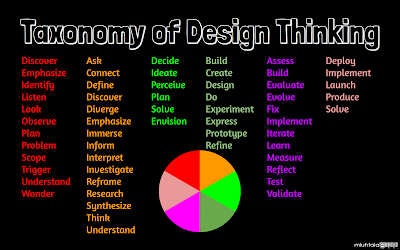Innovating
Design Thinking
We crosswalked about 16 design thinking models to compare them in the spring of 2019.

We soon realized that if placed the model with the most steps on the bottom and the one with the least steps at the top, we could reshape our table into a pyramid - a Design Thinking pyramid that looked a little bit like the old food group pyramid if the carbohydrates were broken into many subgroups.

But we still could not see the connections as clearly as we'd hoped. The structure was sound, so we decided to rainbow-ify the pyramid.

This was a super helpful revision. We could now see what I was pining for during all those wonder years. There were strong connections! Some models (mostly education models) scaffolded the problem side of the pyramid with additional steps. Others (mostly business models) emphasized the solution side with incrementalization (yup, I just made up that word). This makes sense. Businesses need to provide solutions to problems while educators focus on teaching the process of problem solving.
The pyramid is a list of verbs that describe what kids will be doing while Design Thinking. Isn't that a taxonomy? Could this be a taxonomy of Design Thinking? What if teachers could build their own design thinking models to suit their disciplines, tasks, learners, chronological proximity to a holiday/lunch/nap/Friday?
What if kids personalized their learning by using this taxonomy to customize their own plan for creativity and innovation?
Isn't this what Design Thinking is all about? Empowering the learner with ownership of the creative process?

Natasha Jen, a graphic designer for Pentagram gave a talk in June of 2017. Ms. Jen has a few issues with Design Thinking, but this is the one that caught our attention.
“The problem with design thinking as a diagram is that you
really cannot understand the outcome of it and without
an outcome, you cannot critique how good it is.”
~ Natasha Jen, 2017
For a graphic designer whose livelihood depends on a product as an outcome, this makes perfect sense.

But for educators, this is what our students "products" look like on good days. Teaching helps us focus on process rather than product.

Isn't this the product of Design Thinking in education?

And if this is the product, how can we "critique it to know how good it is"? Should we? Or should our learners? Well... I thought about that. How about this as a self-critiquing guide?
